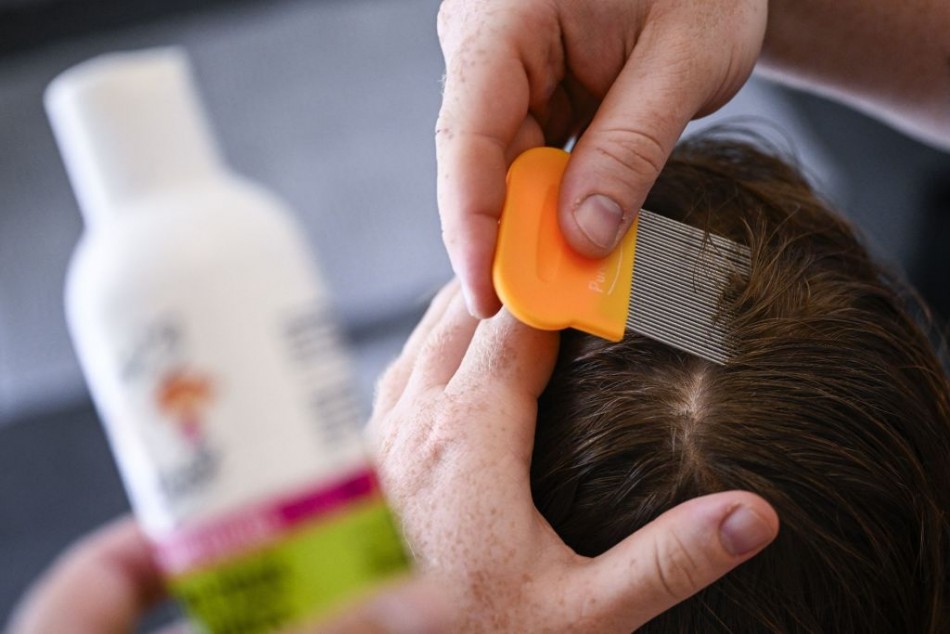What Do Lice Look Like: Identifying, Treatment and Steps To Prevent Head Infestation

Recognizing a lice infestation is easiest when you can distinguish the appearance of their eggs. Lice are adept at concealing themselves, but the eggs firmly attach to the hair shaft until manually removed.
What Do Lice, Their Eggs Look Like
Known as nits, lice eggs are overly little, akin to the size of a knot in a strand of thread. They exhibit an oval shape, typically appearing yellowish-white, and securely affix to the sides of hair shafts.
These can be easily confused with dandruff, scabs, or even hair spray droplets.
Some lice use "nits" exclusively for empty egg casings, reserving "lice eggs" for viable eggs capable of hatching, while others use "nits" for both viable and empty casings.
The incubation period for lice eggs is approximately six to nine days, followed by seven days for nymphs to mature into adult lice, restarting the cycle. Lice has a lifespan of three to four weeks.
Presence of nits does not guarantee live lice, as some may be empty casings or contain non-infective lice embryos. Nits closer to the scalp are more likely to be infective and hatch into live lice.
Continued appearance of new nits after removal indicates an active lice infestation, and a live louse can lay up to eight eggs daily.
The American Academy of Pediatrics (AAP) argues "no-nit" policies in schools, intensifying that healthy children should not be eliminated due to head lice. Recognizing lice and nymphs is essential for efficient medication.
If live adult lice are present, prescription or over-the-counter treatments are necessary, possibly requiring multiple applications. The AAP now advises against eliminating healthy children from school due to head lice.
Recognizing head lice in the hair can be demanding due to disparity in texture, color, and thickness. Nymphs, immature lice, mirror adults but are smaller, roughly the size of a pinhead.
Medication decisions should be based on the presence of live lice or just eggs. Adult lice, about the size of a sesame seed, display six legs, each supplied with small claws for grasping hair.
Awareness with these characteristics aids in making informed medication choices.
Read Also: 10 Toddler-Friendly Arts, Crafts for Fine Motor Skills Development
Main Methods to Treat Head Lice
1. Using Over-the-Counter Medicine for Lice Treatment
Medicated shampoos, cream rinses, and lotions are convenient to kill lice, either over-the-counter (OTC) or through prescript.
When preferring OTC options, insure they are certain for your child's age, as some shampoos are relevant for children as young as 2 months, while others are for those 2 years and older.
Resistance to certain medicines may occur, rendering the treatment ineffective. Consult with a doctor or pharmacist if you suspect a treatment is not working for possible recommendations of alternative options.
Regardless of OTC or prescription, strict adherence to dosage instructions is crucial, as excessive application can be harmful, while insufficient application may prove ineffective.
2. Manually Removing Head Lice by Hand
Manual removal of lice and nits is an alternative, especially if the medicine did not completely eliminate lice or for those who prefer a non-insecticide approach.
For children aged 2 months or younger, manual removal is the only recommended option, as they should not use medicated lice treatment.
Use a fine-tooth comb on wet hair, temporarily immobilizing lice, and consider applying conditioner to facilitate combing. Wipe the comb on a wet paper towel after each pass to inspect for lice or nits.
Electronic combs or special vinegar solutions are unnecessary, as water and conditioner suffice.
It's important not to use a hairdryer after applying scalp treatments, avoid pesticide sprays or flammable chemicals, and refrain from using essential oils not approved by the U.S. Food and Drug Administration (FDA).
Steps To Prevent Head Lice Infestation
Head lice spread quickly through direct contact, common in group settings like schools, childcare centers, and social activities.
They cannot fly or jump but move through crawling and clinging to hair. Contrary to past practices, doctors now discourage "no-nit" policies, allowing children with lice to stay at school until the end of the day, undergo treatment, and return the next day.
To prevent head lice, try these essential steps which could help you get rid of theie eggs and save your child from discomfort.
- Wash all bed linens, clothing, and stuffed animals used in the 2 days before medication.
- Vacuum carpets and upholstered furniture, throwing off the vacuum cleaner bag.
- Soak or discard hair-care items and discourage sharing.
- Regularly check family members for lice.
- Advise children to avoid head-to-head contact at school or during play.
Fighting head lice can be challenging, and persistence may be required due to remaining nits, ongoing exposure, or ineffective treatment.
Seek professional lice treatment centers if needed. Remind children that having lice is not a reflection of cleanliness, and anyone can get them. Patience and adherence to recommended treatments and prevention measures will lead to a lice-free environment.
Related Article: Do I Have Lice or Am I Just Paranoid? 10 Signs You May Actually Have Them
© 2024 ParentHerald.com All rights reserved. Do not reproduce without permission.
